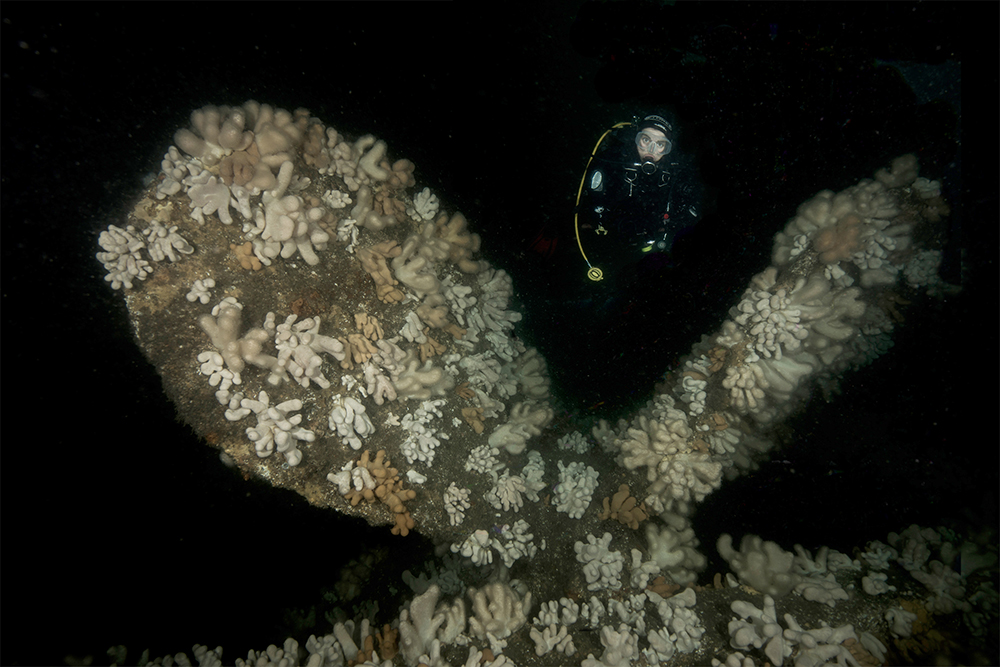 Whenever you see ‘digitatum’ in a binomial you can be assured that something about the organism can be described as finger-like, and sure enough that’s the case with this particular species of soft coral, which goes by the gruesome name of ‘Dead men’s fingers’.
Whenever you see ‘digitatum’ in a binomial you can be assured that something about the organism can be described as finger-like, and sure enough that’s the case with this particular species of soft coral, which goes by the gruesome name of ‘Dead men’s fingers’.
I first saw this species when I was a kid. I was gawking at a weird and wonderful collection of specimens in jars in a museum and came across a jar with what indeed did look like, to my child’s imagination at least, a hand- bloated, grey and rotten. I must have taken the label literally as it has stuck with me all these years. I presume, to superstitious fishermen, working in an industry that often saw fatalities, a sort of ‘gallows humour’ was the norm, I doubt they really believed these were decaying hands were trying to drag folk down into the deep.
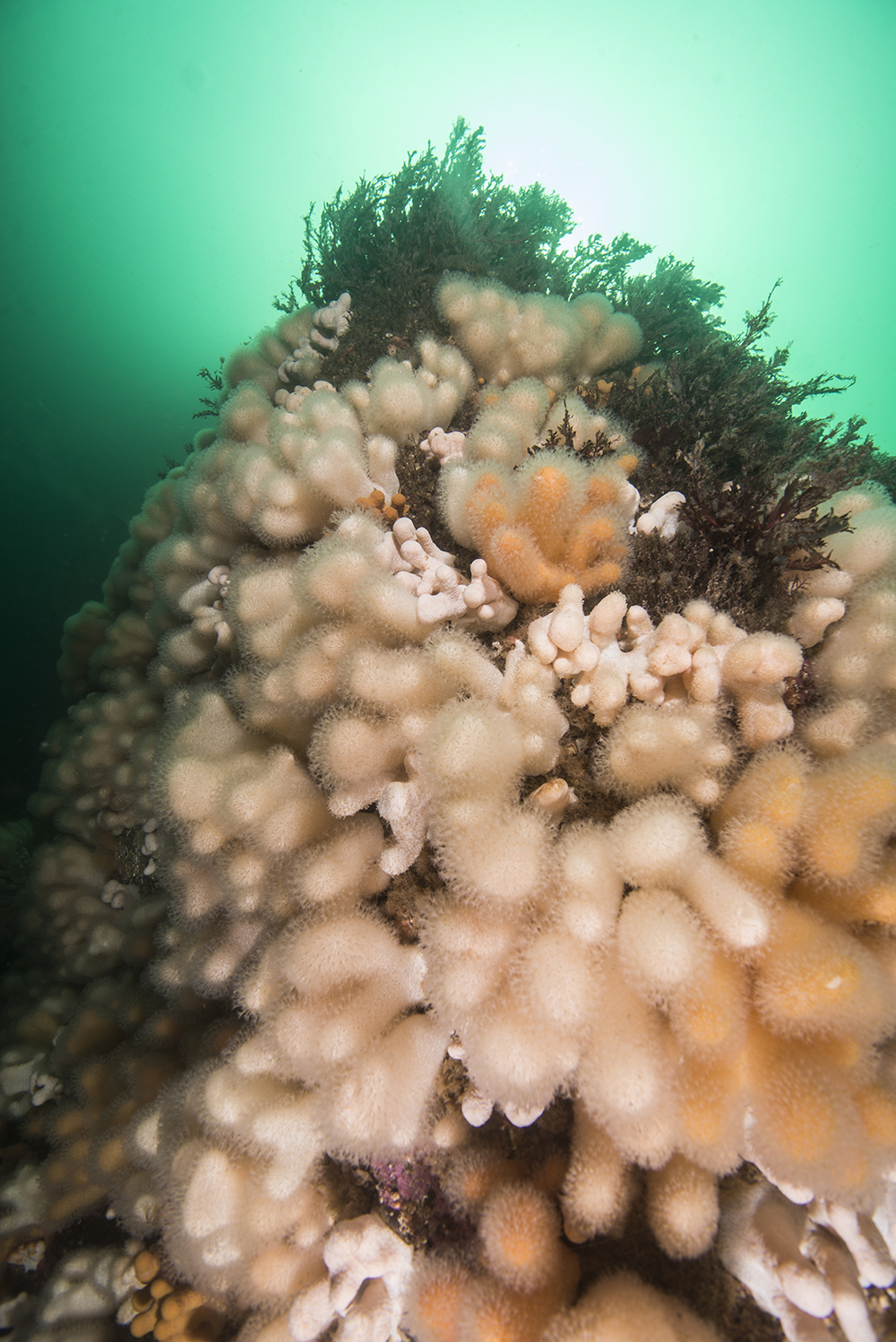
Thirty years later I would scuba dive amongst entire landscapes made bright by growths of these animals that, when viewed up close, are quite beautiful.
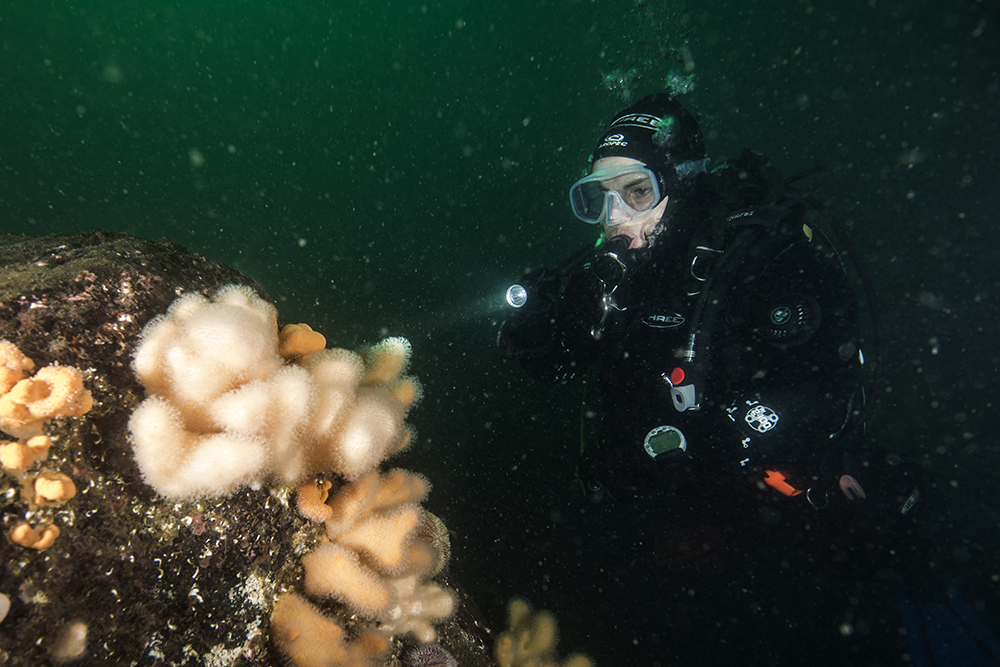
Dead men’s fingers belongs to the Alcyonium genus of soft corals, which has representatives across the oceans, though A. digitatum is overwhelmingly the most common species of coral in the Northeast Atlantic and is found on just about every UK dive site I’ve enjoyed. Having said that, it is a deep-water species that cannot compete with algae which may overgrow it.
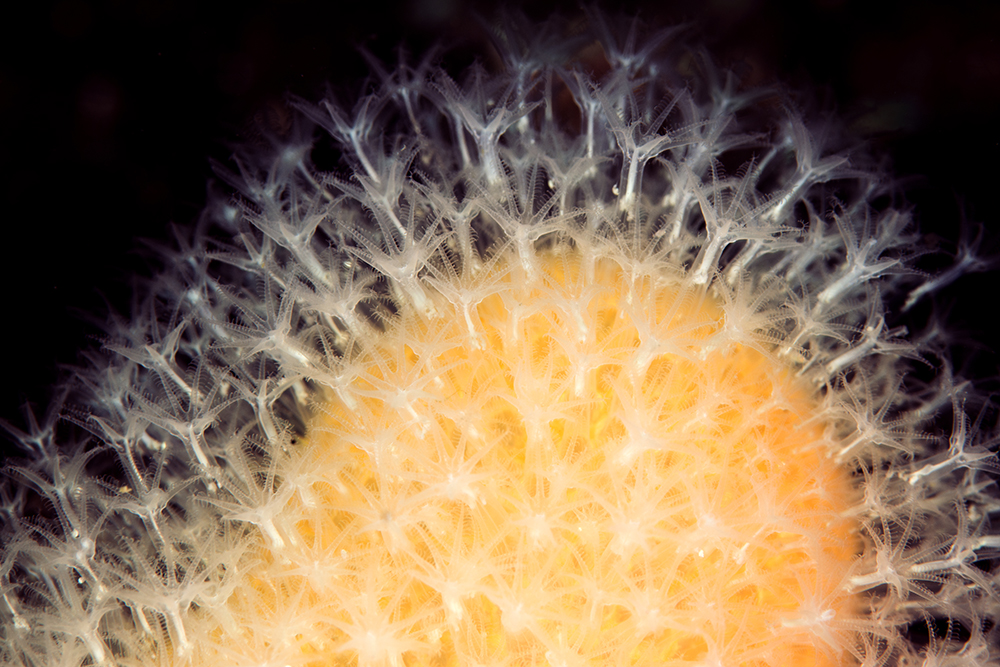
During autumn the colonies retract their feeding polyps and only later does the colony shed an outer layer which removes any encrusting species.
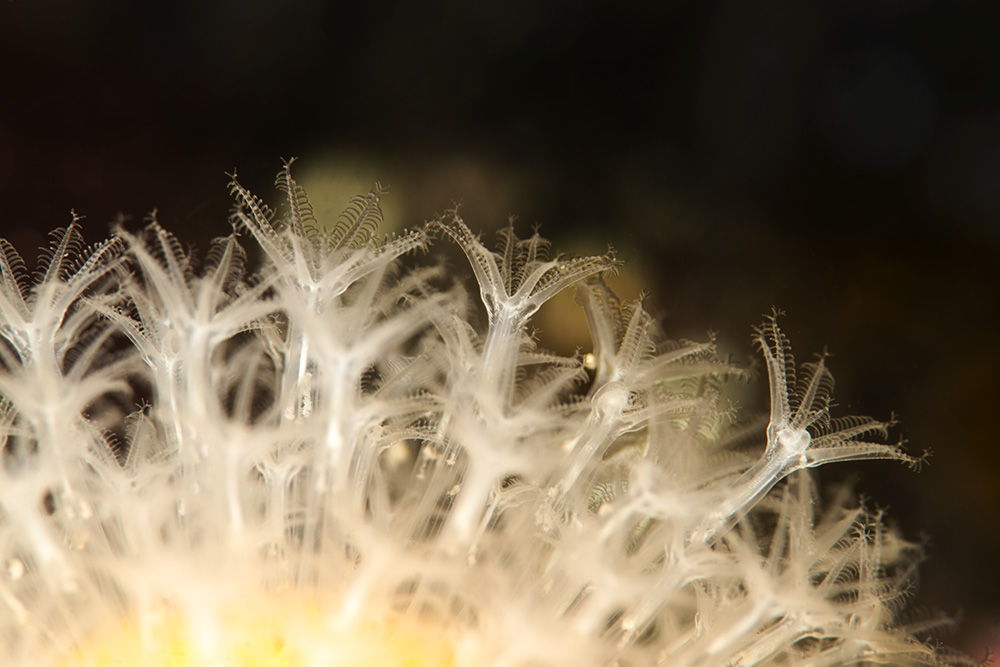
The coral comes in two forms, orange and white, with the white form said to be more common in the south of UK waters. In my experience of diving in the north, the white is indeed more common, creating landscapes that are almost entirely covered in white.
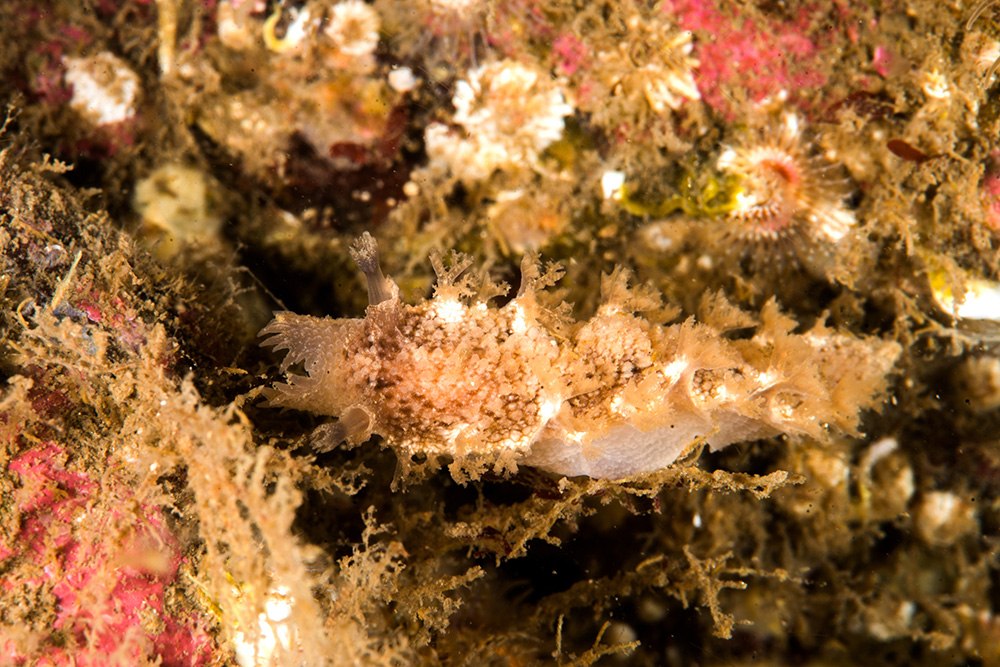
Life is rich amongst the coral, it provides a wealth of hiding placers for an array of animals from fish to crustaceans. One of the animals I always look out for is the very well camouflaged nudibranch Tritonia hombergi which feeds exclusively on A. digitatum.









0 Comments